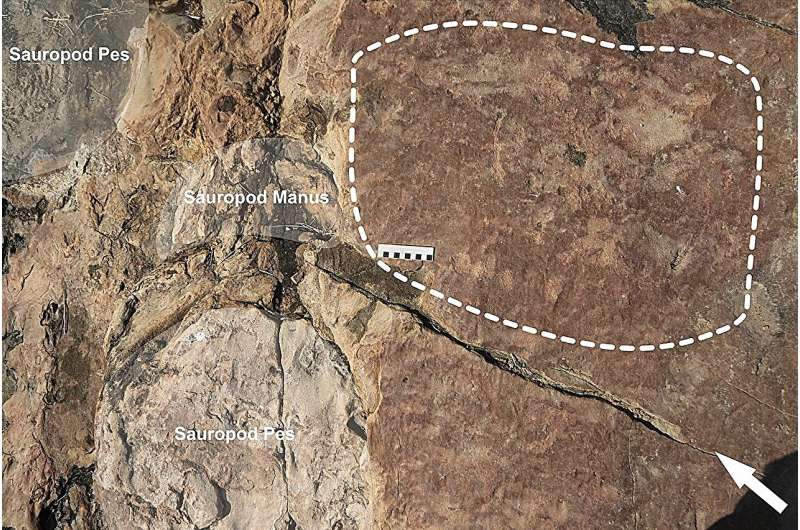March 25, 2024 report
Dig site findings suggests ancient artists may have been inspired by preserved dinosaur footprints

Bob Yirka
news contributor

A team of archaeologists and paleontologists affiliated with several institutions in Brazil has found evidence that ancient artists living in what is now Brazil may have created petroglyphs that were inspired by preserved dinosaur footprints in a shared area. In their project, in the journal Scientific Reports, the group studied petroglyphs made between 3,000 and 9,000 years ago.
The research team was working in the Sousa municipality at a site called the Serrote do Letreiro, a rural part of eastern Brazil. Prior work there has shown that the area was ideal for preserving dinosaur footprints, though few bones have ever been found in the region. Because of that, it has proven difficult to identify which types of dinosaurs created the footprints. They have been dated back as far as 40 million years ago, and researchers have found that they represent ornithopods, theropods and sauropod dinosaurs.
In this new effort, the research team found what they describe as "a remarkable assemblage of petroglyphs and dinosaur footprints." Few instances of the two together in the same dig site have ever been found, they note. They also found what they describe as a close relationship between them, suggesting that the artwork created by local people thousands of years ago was likely inspired by the footprints.
The relationship appears evident, they suggest, due to the large numbers of carvings near or next to the footprints, showing that the artists were aware of them. It also shows that ancient peoples in the region were aware of ancient fossils and placed importance on them. It is possible, the research team suggests, that the footprints, or the creatures that the early people assumed created them, became part of their rituals or ceremonies. The site for their artwork was clearly chosen because of the presence of the footprints.
The researchers further suggest that the petroglyphs also hint at the possibility that the artists who created them were using hallucinogens due to their similarity to visions that are commonly reported by people using such drugs in the modern era.
Written for you by our author —this article is the result of careful human work. We rely on readers like you to keep independent science journalism alive. If this reporting matters to you, please consider a (especially monthly). You'll get an ad-free account as a thank-you.
More information: Leonardo P. Troiano et al, A remarkable assemblage of petroglyphs and dinosaur footprints in Northeast Brazil, Scientific Reports (2024).
Journal information: Scientific Reports
© 2024 Science X Network




















